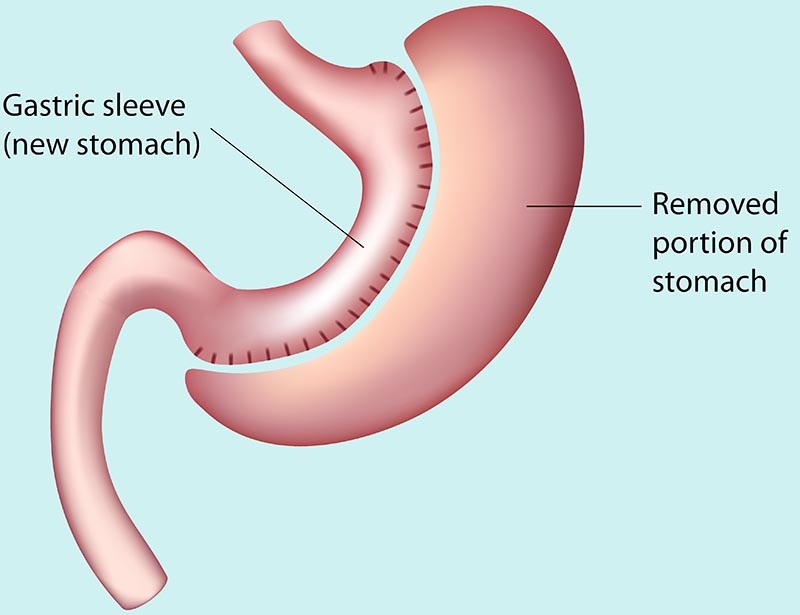Sleeve gastrectomy removes approximately 80% of the stomach to create a slim, tube‑like pouch. It limits intake and favourably alters gut hormones governing appetite, satiety and glycaemic control.
Sleeve Gastrectomy
The Procedure (Keyhole Surgery)
• General anaesthesia; 1–3 hours typical duration.
• Laparoscopic access with small ports; stomach stapled and excess removed; staple line tested for leaks.
• Reinforcement and closure with absorbable sutures.

How It Works
• Restriction: smaller pouch reduces meal size.
• Hormonal effects: changes in GLP‑1, PYY, ghrelin and others enhance satiety and metabolic regulation.
Risks and Complications
• Mortality: ≈0.05–0.09%.
• Early (<30 days) complications: ≈3.0–4.8%.
• General laparoscopic risks: DVT/PE, surgical emphysema, port‑site hernia, injury to adjacent organs (<0.3%), conversion to open (~1%).
• Sleeve‑specific: staple‑line bleeding (~1%), leak (≈2%), stenosis (<1%), new/worsened reflux (≈5–12%).
• Nutritional issues: iron, vitamin D, folate, B1 and B12 deficiencies—prevented with routine supplementation and monitoring.
Why Dr. Spyros Panagiotopoulos?
An experienced minimally invasive surgeon, Mr. Panagiotopoulos performs sleeve gastrectomy with a focus on safety, precision technique and structured follow‑up to secure lasting outcomes.
